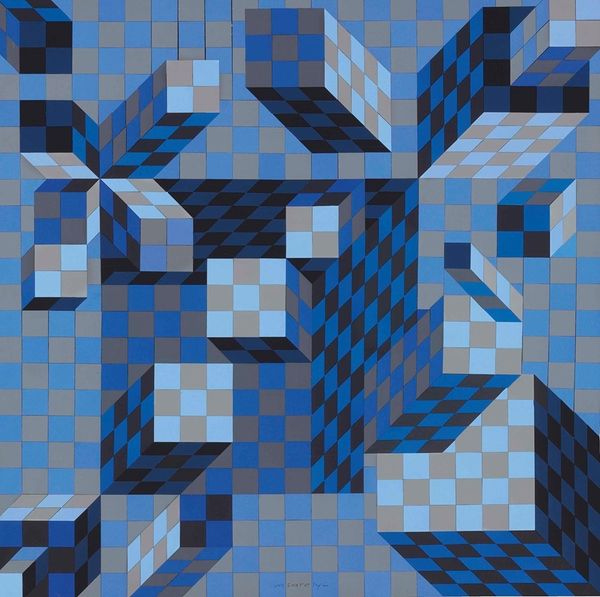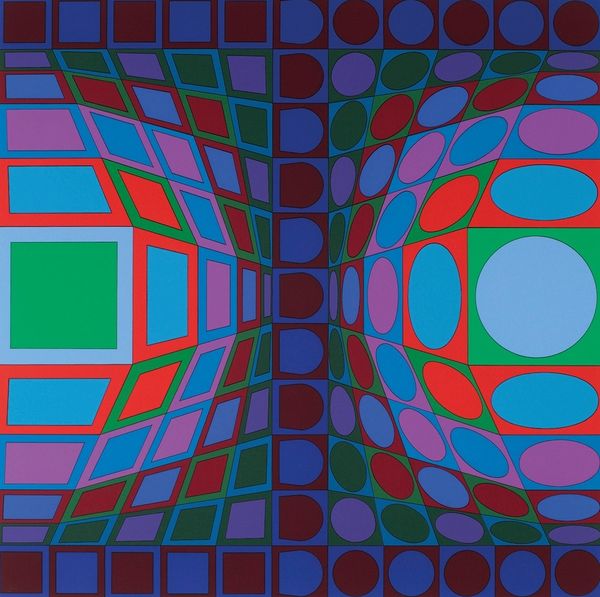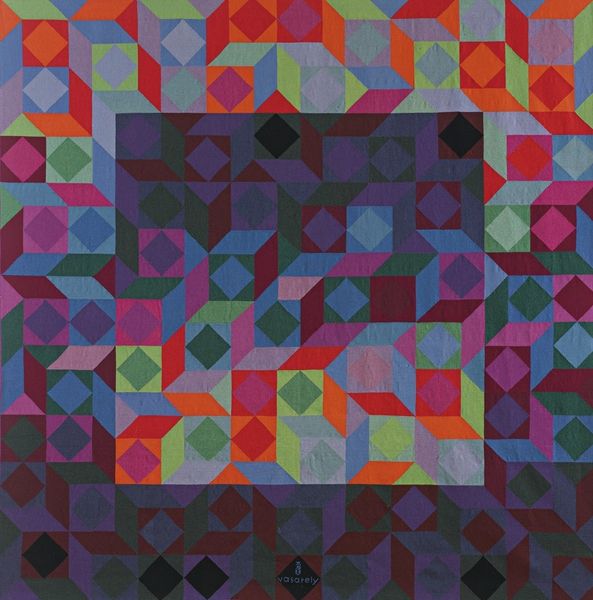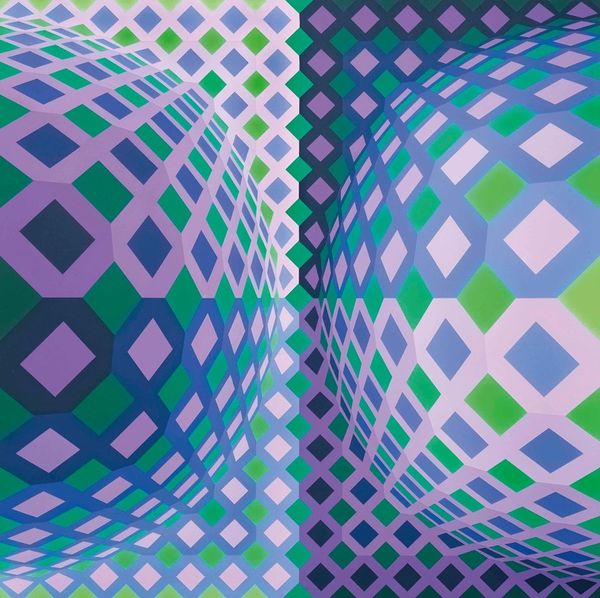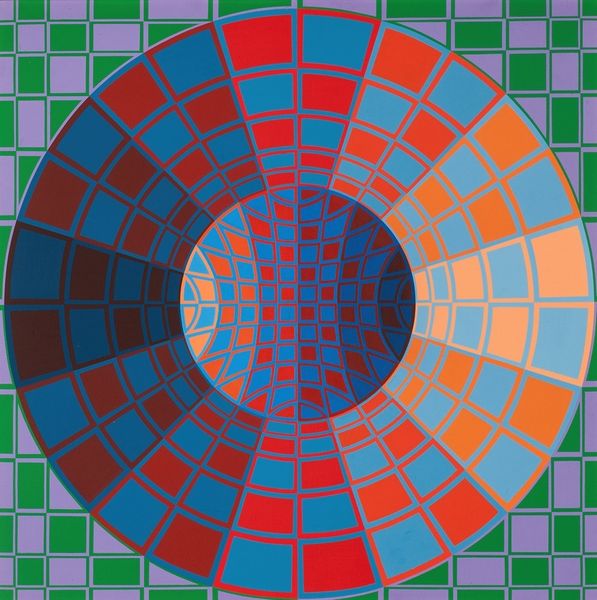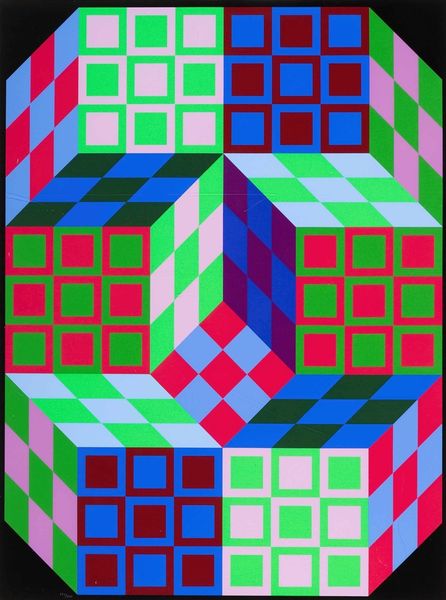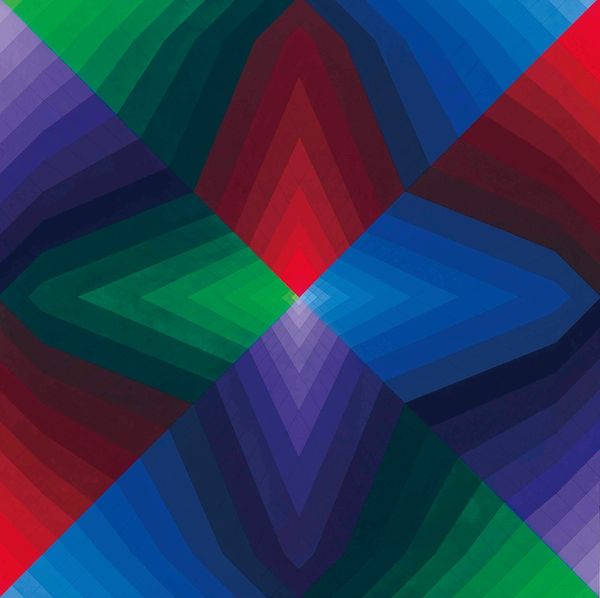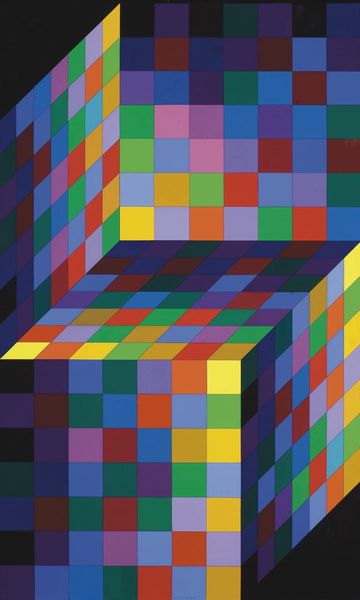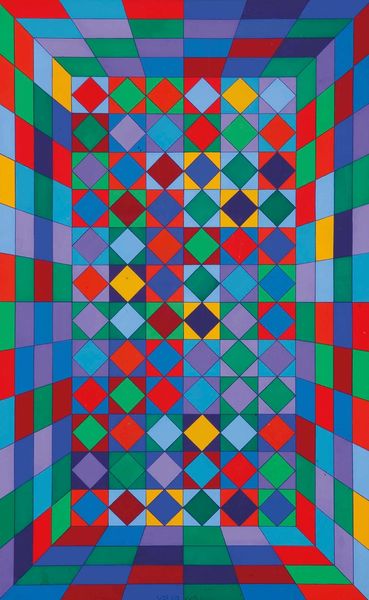
Copyright: Modern Artists: Artvee
Victor Vasarely’s STRI-AXO-PÂL presents a compelling visual puzzle, dominated by the cube and a plus-shaped cross. The cube, a symbol of stability and perfection, has been used since antiquity, from the architecture of ancient Greece to the geometric studies of the Renaissance. It represents order and reason, principles that Vasarely seems to both embrace and question. The arrangement of these cubes forms a cross, not unlike those found in religious iconography and ancient cosmological charts. The cross is a potent symbol of intersection, whether between the earthly and divine, or, in a more secular sense, between different planes of existence. Consider how these symbols play with our perception. The impossible perspectives and shifting planes evoke a sense of disorientation. This recalls the psychological unease found in Escher's work, engaging viewers on a deeply subconscious level, challenging our understanding of space. Vasarely’s symbols create a powerful and complex experience, where familiar shapes become destabilized.
Comments
No comments
Be the first to comment and join the conversation on the ultimate creative platform.
